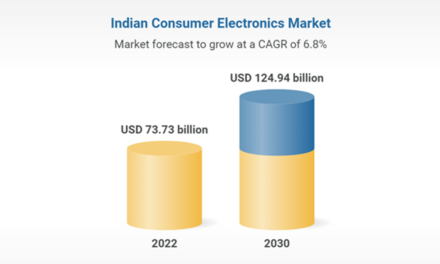Semiconductors are essential materials used in a wide variety of electronic devices to control electrical signals. These materials are conductive in some conditions and insulating in others, making them ideal for creating transistors, diodes, integrated circuits (ICs), and other critical components in electronics. Different types of semiconductors are used for specific functions based on their properties and applications.
Here’s a breakdown of the most commonly used types of semiconductors in electronics:
1. Intrinsic Semiconductors
- Definition: These are pure semiconductors without any impurities, consisting of only one type of material. The most common intrinsic semiconductors are silicon (Si) and germanium (Ge).
- Properties: Intrinsic semiconductors have a band gap that allows them to conduct electricity under certain conditions, such as when heat or light excites electrons to jump from the valence band to the conduction band.
- Applications: These materials are less commonly used directly in products but serve as the foundation for doping to create extrinsic semiconductors.
2. Extrinsic Semiconductors
- Definition: These semiconductors are doped with impurities (other elements) to enhance their conductivity. Depending on the type of impurity added, extrinsic semiconductors can be classified into two types:
a) N-type Semiconductors
- Doping Element: N-type semiconductors are created by doping the intrinsic semiconductor (typically silicon) with an element that has more valence electrons than silicon, such as phosphorus or arsenic.
- Properties: The added impurity atoms provide extra electrons (negative charge carriers) to the material, which increases the number of free electrons available for conduction.
- Applications: N-type materials are commonly used in transistors, diodes, and solar cells.
b) P-type Semiconductors
- Doping Element: P-type semiconductors are created by doping silicon with elements that have fewer valence electrons than silicon, such as boron or gallium.
- Properties: The doping process creates “holes” (missing electrons) in the material, which act as positive charge carriers. The movement of holes allows for electrical conduction.
- Applications: P-type semiconductors are used in conjunction with N-type materials to create PN junctions, which form the core of diodes, transistors, and rectifiers.
3. Compound Semiconductors
- Definition: Compound semiconductors are made from two or more elements from different groups in the periodic table. They offer distinct properties compared to elemental semiconductors like silicon.
- Common Materials:
- Gallium Arsenide (GaAs): Widely used in high-speed transistors, LEDs, and solar cells. GaAs has superior electron mobility compared to silicon, making it ideal for high-frequency applications.
- Gallium Nitride (GaN): Used in high-power and high-frequency applications, such as power electronics, RF amplifiers, and LED lighting.
- Indium Phosphide (InP): Typically used in high-speed and high-frequency applications like fiber-optic communication systems and microwave devices.
- Silicon Carbide (SiC): Known for its ability to handle high voltages, temperatures, and frequencies, SiC is often used in power electronics, electric vehicles, and LEDs.
4. Silicon (Si) Semiconductors
- Definition: Silicon is the most widely used material in the semiconductor industry. It is the primary material for integrated circuits (ICs), transistors, microprocessors, and other key electronic components.
- Properties: Silicon has an ideal band gap of about 1.1 eV, which makes it suitable for a wide range of applications. It is abundant, relatively inexpensive, and well-understood, making it the industry standard.
- Applications: Found in most consumer electronics, computers, smartphones, solar cells, and microchips.
5. Gallium Arsenide (GaAs) Semiconductors
- Definition: GaAs is a compound semiconductor made of gallium and arsenic. It is known for its superior electron mobility and ability to handle higher frequencies than silicon.
- Properties: GaAs has a direct band gap, which makes it more efficient for light emission and optical applications (such as LEDs and lasers). It also performs better than silicon at high frequencies and temperatures.
- Applications: Common in high-speed electronics, optical communication systems, solar cells, and radar applications. It is used in satellite communication systems and smartphones for power amplifiers.
6. Silicon Carbide (SiC) Semiconductors
- Definition: Silicon carbide is a wide bandgap semiconductor composed of silicon and carbon. It has gained popularity in high-power, high-voltage, and high-temperature applications.
- Properties: SiC can operate at higher temperatures (up to 600-800°C) and handle higher voltages compared to silicon. It also has higher thermal conductivity and can work in harsh environments.
- Applications: SiC is used in power electronics (e.g., inverters and power supplies), electric vehicles (e.g., chargers and motors), and high-efficiency lighting.
7. Gallium Nitride (GaN) Semiconductors
- Definition: Gallium nitride is another wide bandgap semiconductor that is increasingly being used for high-power, high-frequency applications.
- Properties: GaN has a direct band gap and can operate at higher voltages, frequencies, and temperatures than silicon. It is more efficient for power switching and RF amplification.
- Applications: GaN is widely used in LED lighting, power electronics, radio frequency (RF) devices, satellite communications, and wireless charging systems.
8. Indium Phosphide (InP) Semiconductors
- Definition: Indium phosphide is a compound semiconductor used for high-speed and high-frequency electronic applications.
- Properties: InP has a direct band gap and excellent electron mobility, making it suitable for high-performance communication systems, including fiber-optic communication and microwave applications.
- Applications: InP is commonly used in optical fibers, high-speed transistors, photodetectors, and telecommunications equipment.
9. Organic Semiconductors
- Definition: Organic semiconductors are based on carbon-containing molecules or polymers. These materials are flexible and can be processed at low temperatures, offering the potential for low-cost manufacturing.
- Properties: Organic semiconductors can be used in organic light-emitting diodes (OLEDs) and organic solar cells. They are not as efficient as traditional semiconductors like silicon but offer unique advantages in terms of flexibility, lightweight, and low-cost production.
- Applications: Organic semiconductors are used in OLED displays, flexible electronics, solar panels, and sensors.
10. Two-Dimensional (2D) Semiconductors
- Definition: Two-dimensional semiconductors, such as graphene and transition metal dichalcogenides (TMDs), are ultra-thin materials just a few atoms thick, offering unique electrical, optical, and mechanical properties.
- Properties: These materials are being researched for their potential in creating flexible and transparent electronics, as well as high-speed transistors and sensors.
- Applications: While still in the experimental stage, 2D semiconductors hold promise for next-generation nanoelectronics, sensors, displays, and photodetectors.
Conclusion
Semiconductors are fundamental to the operation of modern electronics. The choice of semiconductor material depends on factors such as cost, performance, temperature tolerance, power handling, and application requirements. While silicon remains the dominant semiconductor material, compounds like gallium arsenide, silicon carbide, and gallium nitride are gaining traction in specialized high-performance applications. As new technologies emerge, such as organic semiconductors and 2D materials, the landscape of semiconductor materials will continue to evolve.
Hashtags
#SiliconSemiconductors #SiliconChips #SiliconTech #SiliconMicrochips #SiliconBasedDevices #SiliconIntegratedCircuits #SiliconInElectronics #GalliumArsenide #GaAsSemiconductors #GaAsTechnology #HighSpeedSemiconductors #GaAsDevices #GalliumNitride #GaNSemiconductors #GaNTechnology #GaNDevices #PowerSemiconductors #GaNPowerDevices #GaNInElectronics #SiliconCarbide #SiCSemiconductors #SiCTechnology #SiCPowerDevices #SiCForElectronics #HighTemperatureSemiconductors #SiCPowerSemiconductors #GermaniumSemiconductors #GermaniumTech #GermaniumChips #GermaniumInElectronics #GermaniumBasedDevices #GermaniumTransistors #IndiumPhosphide #InPSemiconductors #InPTech #HighFrequencySemiconductors














